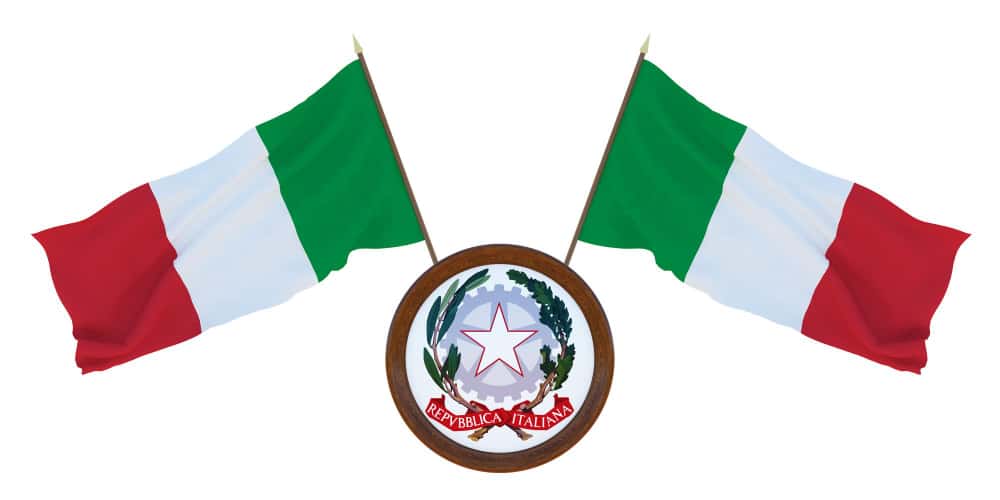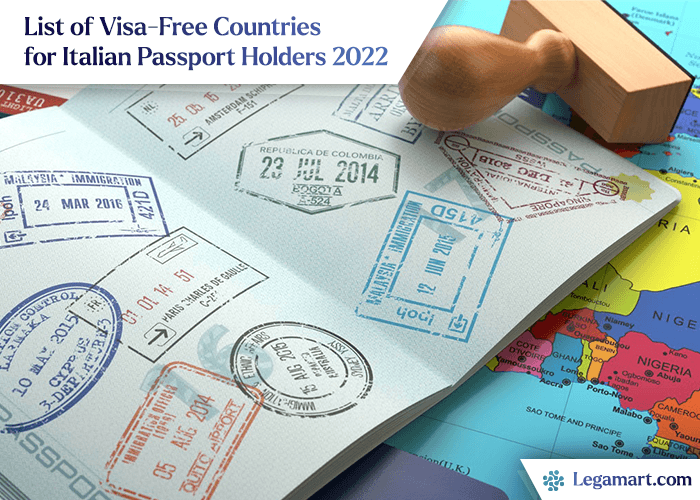Introduction
Every passport deserves to be stamped. Right? The Covid-19 dip in international travel is finally starting to lift, and people managed to get their required freedom. In fact, the first quarter of 2022 saw three times more international travel than in 2021, with Europe leading the rebound.
So Italian passport holders, this is your signal to plan your trip successful and safe overseas trip, regardless of whether you are travelling on business, with family, or alone. Is there a better idea than to visit Italian passport visa-free countries?
Although there are procedures and formalities, they only favour excitement over hassle when considering a few factors. One such factor is keeping your documents in place.
When it comes to international travel, one has to be over-cautious about two crucial documents, i.e., passport and visa. A passport becomes a mandatory document for international travel because it is a government-issued travel document that reveals a person’s identification. It permits travel to and from other countries and access to consular services abroad. The primary distinction between a passport and a visa is that a visa is an endorsement added to a passport. A visa is a temporary permit that a government issues to a foreigner to enter, stay in, or leave its territory.
People assume international travel to be a hassle because of the documentation requirements. However, countries are promoting convenient travel with more and more visa-free travel options coming in. Therefore, your not required freedom to be obtained with any documentation hassle. Sometimes, a passport alone can allow an individual to travel to different countries. For instance, an Italian passport allows more than 100 visa-free countries for Italian passport holders.
Once a person becomes a citizen of Italy, they are eligible to apply for an Italian passport. Obtaining Italian citizenship can be done through naturalization, descent, birth, etc. The passport is valid for 10, 5, or 3 years depending on the applicant’s age. Such a passport is renewable by presenting documents like
- The expiring passport
- Identity proof
- Passport-sized photographs and
- Filled-in DS-11 and DS-82 forms
Through this passport, one can easily access all European nations and travel to visa-free countries for Italian citizens.
Advantages of an Italian Passport
There are several advantages to having an Italian passport. Some of them are listed below:
No Limitations in the European Union
Italy is a member of the European Union (“EU”). It allows Italian citizens to travel to Iceland, Norway, Switzerland, Liechtenstein, and any member-state of the EU without many restrictions. Passport holders are not required to obtain a residence permit before staying for an extended period. They can enter without a visa, establish a business, look for employment, or enrol in school.
Uncover the steps and procedures for immigration to different nations, with a focus on Turkey to Norway and US to Portugal, in Legamart’s insightful articles.
Lifestyle in Italy
Italy offers a wonderful place to live, work, and raise a family. The nation has a pleasant environment, stunning architecture, hospitable citizens, and delectable cuisine. One can choose to live comfortably among mountains or by the sea. As a citizen, buying and selling property in Italy is also convenient. Access to public healthcare is also a cherry on the top.
Visa-Free Countries for Italian Passport Holders
As per the Henley Passport Index, the Italian passport ranks fourth in the number of visa-free countries for Italian passport holders. It means that one need not complete laborious visa application forms if the travel is visa-free. There won’t be any demands for extra paperwork like letters of recommendation from friends or employers.
It is also easy on the pocket of travellers. Vatican City, San Marino, Croatia, Slovenia, Austria, and Bosnia and Herzegovina are the closest countries to Italian passport holders that do not need a visa for travel.
Once the Italian passport is acquired, it is convenient to travel to several countries on different continents without a visa. Also, several countries allow the easy mode of visa-on-arrival and electronic travel authorization through the Italian passport.
Countries Italian Citizens Can Visit Visa Free in 2023

Following is a continent-wise list of visa-free countries for Italian passport holders, along with the details about the allowed stay in these visa-free countries. The list excludes the countries which provide electronic travel authorization and visa-on-arrival. If they are included, the Italian passport allows travel to more than 200 Italy visa-free countries through visa-free travel, visa on arrival, and electronic travel authorization.
The countries for visa-free travel include Europe, Central America and Caribbean, South America, Africa, Oceania, and the Middle East. The visa-free countries list is as follows:
| Africa | Europe | North America | South America | Asia | Oceania |
| Botswana | Albania | Anguilla | Argentina | Armenia | Cook Islands |
| Cape Verde | Andorra | Antigua and Barbuda | Bolivia | Brunei | Fiji |
| Eswatini | Austria | Aruba | Brazil | Georgia | French Polynesia |
| Gambia | Belarus | Bahamas | Chile | Hong Kong | Kiribati |
| Lesotho | Belgium | Barbados | Colombia | Indonesia | Marshall Islands |
| Mauritius | Bosnia | Belize | Ecuador | Israel | Micronesia |
| Mayotte | Bulgaria | Bermuda | Falkland Islands | Japan | New Caledonia |
| Morocco | Croatia | Bonaire | French Guiana | Kazakhstan | Northern Mariana Islands |
| Cyprus | British Virgin Islands | Guyana | Kyrgyzstan | Niue | |
| The Czech Republic | Cayman Islands | Paraguay | Macao | Palau | |
| Denmark | Costa Rica | Peru | Malaysia | Samoa | |
| Estonia | Curacao | Uruguay | Palestinian Territories | Soloman Islands | |
| Faroe Islands | Dominica | Venezuela | Philippines | Tonga | |
| Finland | Dominica Republic | Qatar | Tuvalu | ||
| France | El Salvador | Singapore | Vanuatu | ||
| Germany | Greenland | South Korea | Wallis and Futuna | ||
| Gibraltar | Grenada | Taiwan | |||
| Greece | Guatemala | Thailand | |||
| Hungary | Haiti | Timor-Leste | |||
| Iceland | Honduras | Turkey | |||
| Ireland | Jamaica | United Arab Emirates | |||
| Kosovo | Mexico | Uzbekistan | |||
| Latvia | Montserrat | Vietnam | |||
| Liechtenstein | Nicaragua | ||||
| Lithuania | Panama | ||||
| Luxembourg | Puerto Rico | ||||
| Malta | Saint Kitts and Nevis | ||||
| Moldova | Saint Lucia | ||||
| Monaco | Saint Maarten | ||||
| Montenegro | Saint Pierre and Miquelon | ||||
| Netherlands | Saint Vincent and the Grenadines | ||||
| North Macedonia | Trinidad and Tobago | ||||
| Norway | Turks and Caicos Islands | ||||
| Poland | |||||
| Portugal | |||||
| Romania | |||||
| San Marino | |||||
| Serbia | |||||
| Slovakia | |||||
| Slovenia | |||||
| Spain | |||||
| Sweden | |||||
| Switzerland | |||||
| Ukraine | |||||
| United Kingdom | |||||
| Vatican City |
Requirements for Travel to Countries Visa-Free through an Italian Passport
Requirements for Visa-Free Travel
Italian passport holders are subjected to visa requirements by other nations worldwide due to entry limitations for visa-free access. Countries require the fulfilment of admission requirements, and these requirements change based on:
- Destination Country
- Purpose of the trip, and
- Length of time the visitor intends to stay there.
Italian nationals or passport holders can typically enter a nation that does not need a visa or other visa-free countries by only showing a valid passport for travel, business, or transit and brief stays lasting between 15-180 days.
For instance, an Italian passport holder can travel to Singapore visa-free. After arriving in Singapore, the traveller simply needs to perform the following steps:
- Go to the Singapore immigration counter.
- Show the original passport, the travel itinerary and proof of funds to show enough money for a stay in Singapore.
These requirements are also to get the Singapore Arrival Card and not the visa’s temporary approval.
For France, an Italian passport holder needs to present the following:
- The original passport of the Italian passport holders
- Proof of accommodation and financial means
- Return tickets
- A medical insurance certificate
Requirements for Visa on Arrival

Italian people can receive a visa on arrival at border entrance checkpoints of their destination country. Upon arriving at the destination, one must go to the immigration checkpoint to get a visa. After that, they often have to wait in line until a border guard delivers them a visa-on-arrival application to fill out.
It is often essential to pay a fee after completing the visa on arrival form with the personal passport of the Italian passport holder and travel details. Payment is typically only accepted in cash and the local currency in many nations.
Depending on the country, an Italian visa on arrival may be granted for single or multiple entrance permits, with a stay duration of 7 days and 3 months.
Similarly, to travel to Egypt, an e-visa has to be obtained online. To get the same, one needs to provide an Italian passport, a visa fee and a completed application form.
Requirements for Electronic Travel Visa Authorizations
Italian nationals can apply for an electronic visa waiver or an electronic visa (eVisa) for the country of their choice. By using electronic travel visa authorization systems, visitors from Italy can get a visa or a waiver of the requirement for a visa without going in person to the nearest embassy or consulate before their trip.
Italian nationals may travel for up to three months with approved travel authorizations and online visas. These authorizations are provided as single-entry or multiple-entry permits.
Electronic travel visa authorization can be electronically connected to Italian passport holders or delivered to the traveller via email once approved. Many nations demand that applicants print a paper copy of the authorized document to provide when they arrive.
What Countries Issue eVisa to Italian Citizens?
Many countries provide this option to Italian citizens. Today, 46 countries provide e-visa or visa on arrival for Italian citizens or for Italian passport holders travel. These are – Angola, Australia, Azerbaijan, Bahrain, Bangladesh, Benin, Burkina Faso, Cambodia, Christmas Island, Comoros, Djibouti, Egypt, Ethiopia, Gabon, Guinea, India, Iran, Jordan, Kenya, Kuwait, Laos, Lebanon, Madagascar, Malawi, Maldives, Mauritania, Mozambique, Myanmar, Nepal, Pakistan, Papua New Guinea, Russia, Rwanda, Saudi Arabia, Sierra Leone, Somalia, Sri Lanka, Suriname, Tajikistan, Tanzania, Togo, Uganda, Zambia, Zimbabwe, Guinea Bissau, South Sudan.
Therefore, you can travel to the above countries by obtaining an e-visa or a visa on arrival or through a tourist card.
Conclusion
It is often necessary to obtain valid visas and passports to travel internationally. However, certain exceptions are made to this, and it is possible to travel visa-free. Sometimes, a passport allows visa-free travel to several nations, including New Zealand, Cape Verde, Spain, Canada, Egypt, Israel, South Africa, United Kingdom, Antigua and Barbuda, Papua New Guinea, Sierra Leone, Vincent and the Grenadines, El Salvador, Iceland Ireland and many others.
A valid Italian passport allows free travel access to the European Union and visa-free travel to countries outside the EU. Also, the passport holder can easily travel to more than 30 nations by the simple process of electronic travel authorization and visa on arrival. The requirements of all three approaches are slightly different. The Italian passport remains the only requirement for all three.




